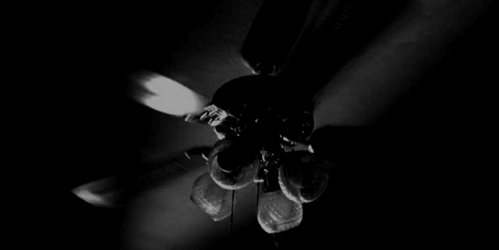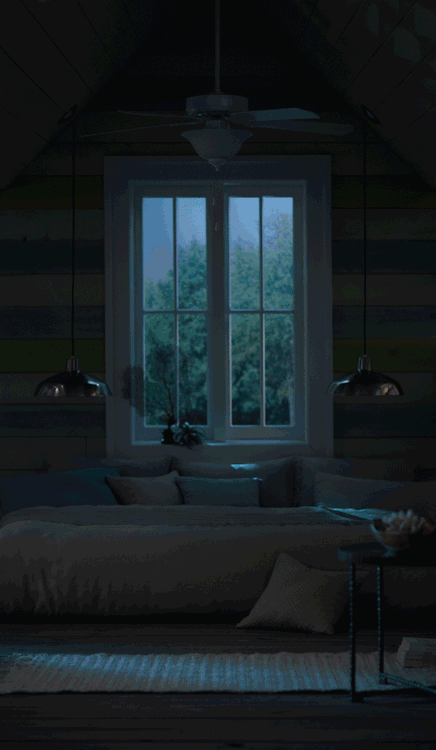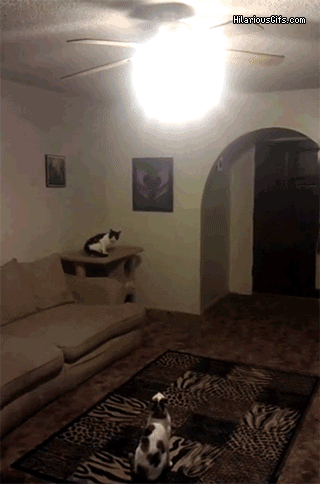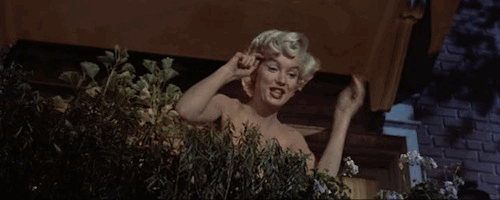❄️Ways To Cool Your Home 🐧
⛄ Without Air Conditioning ☃️
For the average household, summertime leads
to higher energy bills as people crank up the air conditioning in their
homes in order to combat rising temperatures outdoors. Unfortunately,
families with a tight budget may find themselves forced to choose
between in-home comfort or having to make sacrifices in other financial
areas. Also, with the modern emphasis on green living and conservation,
more and more individuals are likely to say “no” to AC and bear the heat
in order to reduce their footprint.
Wouldn’t it be nice if there were other
options?
What if we could cool our homes without spending a fortune on the electric bill or damaging our environment?
What if we could cool our homes without spending a fortune on the electric bill or damaging our environment?
Actually, we can.
Here are the top 10 most effective ways
to cool your home without air conditioning.
1. Ceiling Fans

Probably the most common alternative to
central air conditioning is the use of ceiling fans. If you don’t
already have them installed in your home, you may want to consider
putting a ceiling fan in every room – or at least all of the rooms that
see frequent use. Of course, you want to make sure to get a fan that is
big enough to cool the space where you plan to install it. Measure your
room or rooms before you go shopping as most ceiling fans will have
maximum room dimensions listed on the outside of the packaging. Finally,
be certain that your fans are spinning in the correct direction. (Most
fans have a directional switch.) Remember that hot air accumulates in
high places. During cooler months, you want your ceiling fan to push hot
air down and away from the ceiling in order to help heat your living
space. In summer, the fan blades should pull air toward the ceiling so
as to circulate, but avoid pushing more hot air down into a room.
2. Upgrade Your Window Treatments
While the initial investment for outfitting
your home with energy-efficient window treatments is fairly lofty, you
can expect to see a huge difference in temperature immediately upon
installing them. The best choices for reflecting the sun’s heat are
cloth roller, accordion, or Roman shades. For those with an eye for the
all-natural, look for organic cotton or wool (which is flame-resistant)
curtains or shades. Another option is woven bamboo, a wonderful
renewable resource that makes for beautiful Roman or roller shades.
Choose coverings equipped with a white outer lining for maximum
heat-deflection.
Even if you find that you can’t afford to
cover all of the windows in your home, just do one room or even one or
two windows at a time. Start with the hottest room (usually the ones
with west-facing windows or those that get the most afternoon sun) and
work your way to rooms that are naturally cooler due to vegetation or
orientation.
3. Plant Some Trees
This solution won’t offer immediate results,
but over time can have a dramatic cooling effect. Plant trees around
your house to shade walls from the suns heat. Choose trees that grow
around 1 – 2 feet per year and make sure to feed and water your saplings
appropriately so they can reach their maximum potential. Just remember
not to plant new trees too close to your home as spreading roots can
damage foundations. Expect the roots of your tree to reach to the same
diameter as the upper growth (usually listed on the label) and plan
ahead to allow enough room. If you aren’t sure how to pick a tree or if
you’re concerned that you may have a ‘brown thumb’, most home
improvement stores and nurseries have experts on staff who can take you
through the process step-by-step. Also, check out this article for a list of trees that offer great shade without becoming pests.
Alternately, you can grow potted trees or
other plants indoors for a less dramatic but more immediate cooling
effect. The micro-climate formed by a roomful of potted plants actually
lowers air temperature as it improves air quality. Position ‘part-sun’
potted plants in front of windows to trap more heat and help shade a
room.


4. Grow Some Vines
For those who lack the time, patience, or
funding to plant shade trees, the plant kingdom offers another option –
climbing vines. Fast-growing, hardy, and sporting thousands of tiny
solar panels (aka leaves), a mature climber can lower the temperature of
an outer wall by as much as 50%. The best part? These plants require
almost no maintenance. Read more about selecting and growing vines in this article from the Clemson Extension.
If you’re adverse to the idea of a plant
growing up the side of your house, you could alternately put up a high
trellis and train your climbing vine to grow up this structure instead.
5. Put Up Awnings
A great alternative to indoor window
treatments or planting trees are awnings. These handy outdoor shades
come in a variety of styles, seemingly endless patterns and colors, and
can even be made retractable. For more information on choosing the right
awning, read this helpful guide by Better Homes and Gardens.
6. Window Film
Another cost-efficient way to beat the heat
is to cover your windows with heat-deflecting window film. These
coverings are far less expensive that cloth or woven shades and while
they can be difficult to install on your own, two people working
together can get the job done fairly easily.
7. Seal Up Air Leaks
Doors and windows with old or damaged seals
can be the source of a lot of discomfort in the summertime (as well as
in the colder months!) You can usually feel the leaks in doors and
windows even if you can’t see them – you walk by and a hot draft of air
hits you out of nowhere. Don’t put off closing up these leaks! Grab a
caulk gun and a tube or two of sealant, make sure the seam is clean,
then go to work. For help in choosing the appropriate caulk for the
job, read this guide.
To fix air leaks under doors and windows where sealant isn’t an option,
first check the weatherstripping – another easy do-it-yourself fix. For
larger gaps, you can also purchase or make your own draft dodger.
8. Let in Cool Air
If you know the outdoor temperature is going
to drop once the sun goes down, open up a window or two in every room.
If your windows are the kind that open from the top down as well as from
the bottom up, try opening both ends. As cool air flows in through the
bottom crack, heat that has accumulated around the ceiling will be
pushed out the top. Also, leave as many interior doors open as you can.
This will promote better air circulation throughout your home and help
to cool down overheated humans and pets as the breeze flows through the
house. Just remember to close all open windows before the temperature
climbs again the next day!
Try to minimize use of your stove or oven.
Make certain that your dryer is properly connected to the output vent
and run the machine on low heat whenever possible. Alternately, try
installing a clothes line and dry your laundry outdoors to conserve even
more on energy and bring down your utility bills. Also, if you haven’t
already switched all of your old incandescent bulbs for compact
fluorescents or light-emitting diodes, summer is the time to do it.
Incandescent light bulbs give off a tremendous amount of heat while
CFL’s and LED’s are cooler, last longer, and use a lot less energy.
At some point in your life, you’ve probably
seen people walking around out in the summer heat with a tiny
battery-operated fan attached to a spray bottle full of water. You can
make something similar in your home that does the same trick without the
constant need to spritz water on your face. Just fill up two bottles
with water, pop them in the freezer, and wait. Once they’re frozen, set
one of the bottles between yourself and the business end of a small fan
and let the cold air soothe away the summer heat. When the first bottle
thaws, swap it out for the spare. Want to cool the air in your whole
house this way? No problem! All you need is one fan and two bottles per
room.
MM: Let me just go put something on.
I’ll go into the kitchen and get dressed

Richard Sherman: The kitchen?

MM: Yes, when it’s hot like this - you know what I do?
I keep my undies in the icebox.
I’ll go into the kitchen and get dressed

Richard Sherman: The kitchen?

MM: Yes, when it’s hot like this - you know what I do?
I keep my undies in the icebox.
How to Keep Your House
(and Body)
Cool This Summer
Cool This Summer
Without Energy-Sucking Air Conditioners
*
It’s that time! The days are getting hotter and hotter, and we’re all
sweating our ways through the days (in many parts of the U.S., anyway).
But hotter temperatures doesn’t have to equate to a higher electricity
bill (or wasted precious energy) due to a constantly-running air
conditioner (if you have one).
Follow these tips for some energy-saving ideas for keeping your house cool sans air conditioning, whether you have one or not:
1. Seal Any Drafts
It’s important to keep cool air
in when you do get some flowing, so make sure any and all drafts in
your house or apartment are sealed tight. Check around windows and
doors. Equip yourself with some draft-plugging materials and get to
plugging!
2. Switch Your Lightbulbs
Replace any incandescent lightbulbs for CFL or LED in
your house or apartment. This will save you energy from the get-go,
and, as a bonus, both CFL and LED bulbs give off less heat than the
other types.

3. When The Sun Goes Down, Open Up
If you encounter a cool night or some cooler breezes after a summer
storm, crack the windows to let that fresh, cool air flow through
whenever possible. Then, before the temperatures warm up again, seal
everything closed tight again.
4. Keep The Sun Out
Yes, sunlight is great for us — but get your fill outside in the
summer months. Keep your shades drawn during the days if you’re trying
to keep the a.c. off, as sunlight can create much more heat than you’d
even imagine in your house!
Brighten things up with some houseplants and soft indoor lighting (from CFL or LED lights).

5. Go Raw!
Summer is a great time to transition to more raw foods
as it is, but if you’re trying to keep your indoors settings cool, keep
that stove and oven off as much as possible. If you must cook, opt for
small appliance use, like rice cookers.
6. Fire Up the Fans
If need be, use your indoor fans, or grab a few tabletop ones. Even
though you’ll be using some energy, it’s still less so than a central AC
unit or even a window AC unit. According to “Mr. Electricity,”
a 2.5 ton central AC system uses 3500 watt-hours per one hour of
continuous use. A window AC uses 900 watt-hours. A ceiling fan on high
uses just 75 watt-hours in comparison! Do the math there and note that
you can run several fans and still use less than you might with the a.c.
running!
7. Drink Up
There’s really no time than summertime to up your fluid intake.
Drinking more cooling, hydrating beverages, like fresh green smoothies
and big glasses of ice water, will not only keep your body fueled right
in these hot months, but will also keep your body temperature lower,
thus helping to eliminate the need for more cool air around you. Try
hydrating more before reverting to blasting that AC!

What are your favorite ways to keep your house and body cool in the
sweltering summer months?
Erin Trauth July 8, 2014
⛄ 🥶 🐧 ❄️ ☃️
Cuddling in summer looks like this,
especially if your AC’s broken.





No comments:
Post a Comment